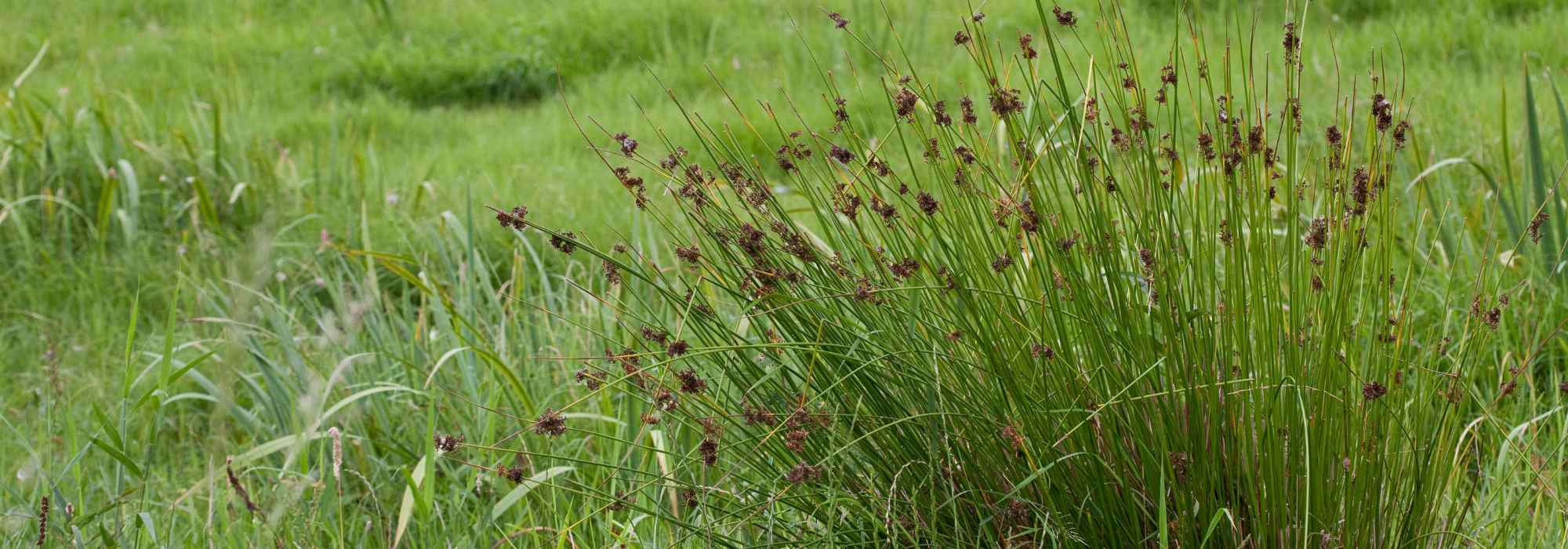
Juncus - Rush: Planting and Care
Contents
The Juncus in a nutshell
- Juncus, or rushes, thrive in damp areas
- Their cylindrical stems are particularly striking
- The roots of rushes stabilise the soil and filter water
- Juncus are easy to grow anywhere, in moist soil
- Rushes beautifully enhance aquatic gardens
The word from our expert
Juncus, or rushes, are elegant and robust plants, perfect for damp gardens. A member of the Juncaceae family, this genus includes around 300 species, including the well-known Juncus effusus, prized for its slender stems and ability to stabilise waterlogged soil. Their name comes from the Latin juncus, meaning “link,” recalling their ancestral use in basketry.
These architectural plants, with their cylindrical stems often devoid of leaves, bring structure and lightness to the garden. Their fibrous roots reinforce banks and filter water, making rushes an ecological asset. They pair beautifully with plants like aquatic irises, sedges, or Lobelia cardinalis.
Easy to grow, rushes can be planted in spring or autumn, either in the ground or in submerged pots, in loosened and consistently damp soil. Light pruning in spring is enough to remove dry stems. Be cautious, as some species, like Juncus effusus, can become invasive: containing them in pots is a good solution.
With their low maintenance, adaptability, and ecological benefits, rushes are perfect companions for enhancing and enlivening your damp spaces, while also promoting biodiversity.
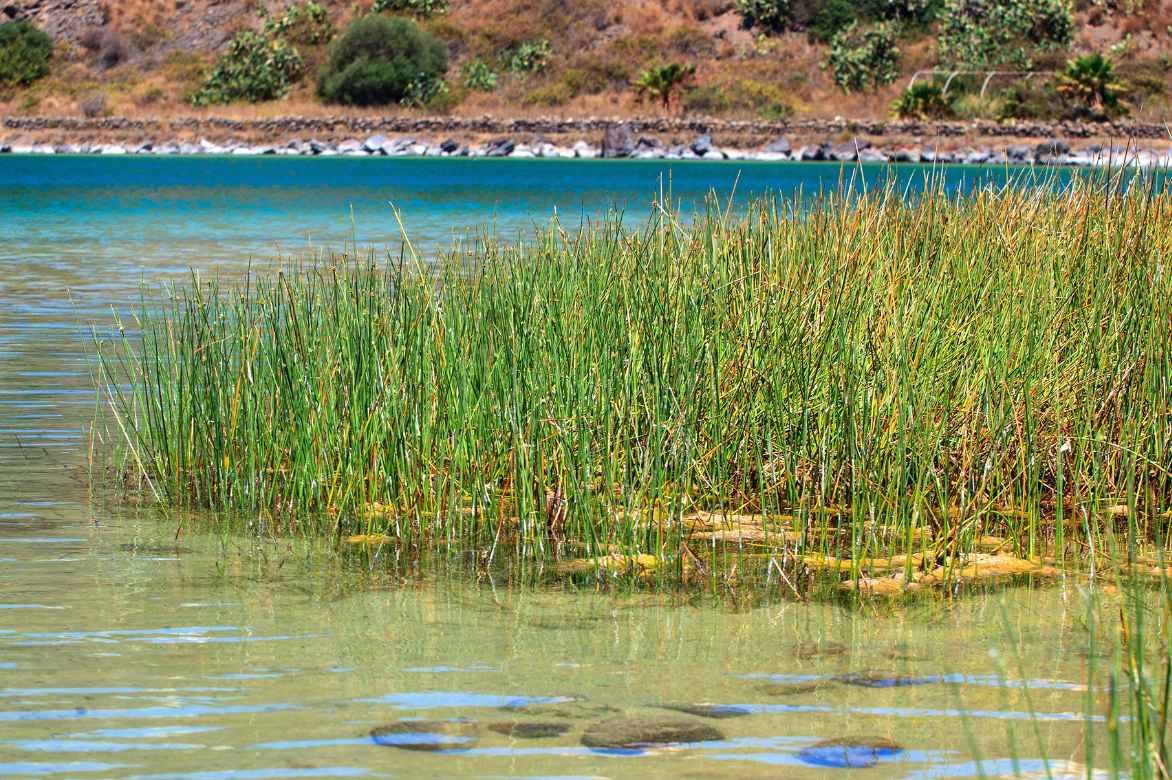
Rushes on Lake Pontelleria in Italy
Botany and description
Botanical data
- Latin name Juncus sp.
- Family Juncaceae
- Common name Rush
- Flowering July to September
- Height approximately 60 cm
- Exposure sun and partial shade
- Soil type clayey, heavy and moist
- Hardiness -30°C
Juncus, commonly known as rushes, are herbaceous plants belonging to the Juncaceae family. The genus Juncus, which includes around 300 species, derives its name from the Latin word juncus, meaning “ligature” or “bond,” as the stems of certain species were historically used to make ropes or weave baskets. In natural habitats, rushes are most recognisable by their rigid stems, often round and smooth, and their small, discreet flowers in clusters. Among the most well-known rushes is Juncus effusus, or Soft Rush, characterised by its tall, upright stems, frequently used in landscaping near water features.
Juncus thrive in wet and marshy environments, such as riverbanks, pond edges, or flood-prone meadows. Due to their strong affinity for waterlogged soils, they play a significant ecological role, contributing to bank stabilisation and water filtration. They can be found worldwide, though they are particularly common in temperate regions of the northern hemisphere, as well as in some tropical and subtropical areas, usually at higher altitudes. Their ability to endure challenging growth conditions makes them particularly suited to wetland ecosystems, while also granting them remarkable resilience to climatic variations.
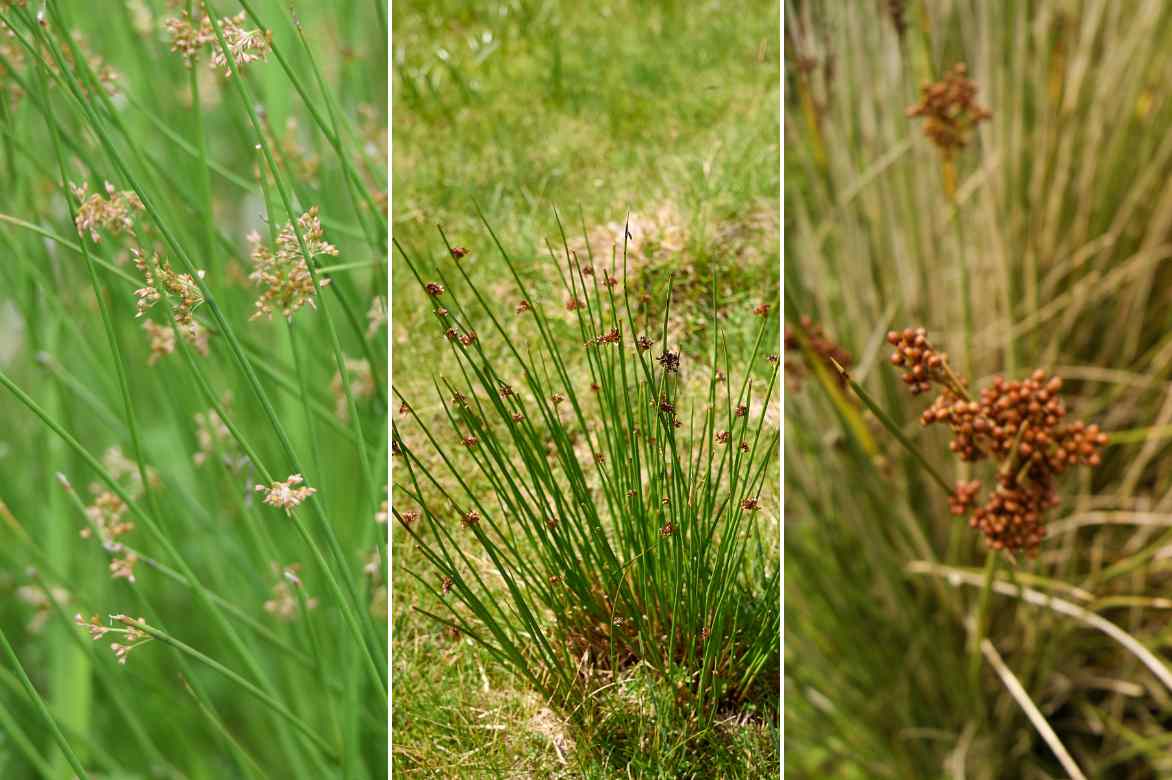
From left to right: Juncus effusus, Juncus conglomeratus, and Juncus acutus
Juncus, or rushes, are plants with an upright and slender habit, often featuring tight clumps of straight stems that shoot directly from the base. Their form is fine and cylindrical, giving them a rigid, vertical silhouette, ideal for aquatic landscapes. The root system is fasciculate, consisting of a dense network of fibrous roots that anchor them firmly in wet and marshy soils. These roots help stabilise banks while enabling the plant to efficiently absorb water and nutrients for growth.
The foliage of Juncus is distinctive: the leaves are often reduced to sheaths surrounding the stems, and sometimes they are entirely absent, leaving the stems themselves to perform photosynthesis. When present, the leaves are thin, cylindrical or flattened, and barely noticeable, blending in with the stems.
The inflorescence of Juncus is discreet yet elegant, composed of small flowers in clusters or panicles that appear along the stems or at their tips. The flowers, though tiny, have a complex structure with minuscule brown or greenish tepals, which are quite modest in appearance. Fruiting occurs in the form of capsules containing numerous small seeds. These capsules split open when ripe, allowing the seeds to disperse via water or wind, facilitating the spread of the species in surrounding wetland habitats.
Did You Know? The term to strew comes from the word rush. In the past, it was common to scatter rushes, foliage, or flowers on the ground to create a natural carpet, both decorative and practical. Rushes were used to scent, soften, and insulate the floors of medieval homes.
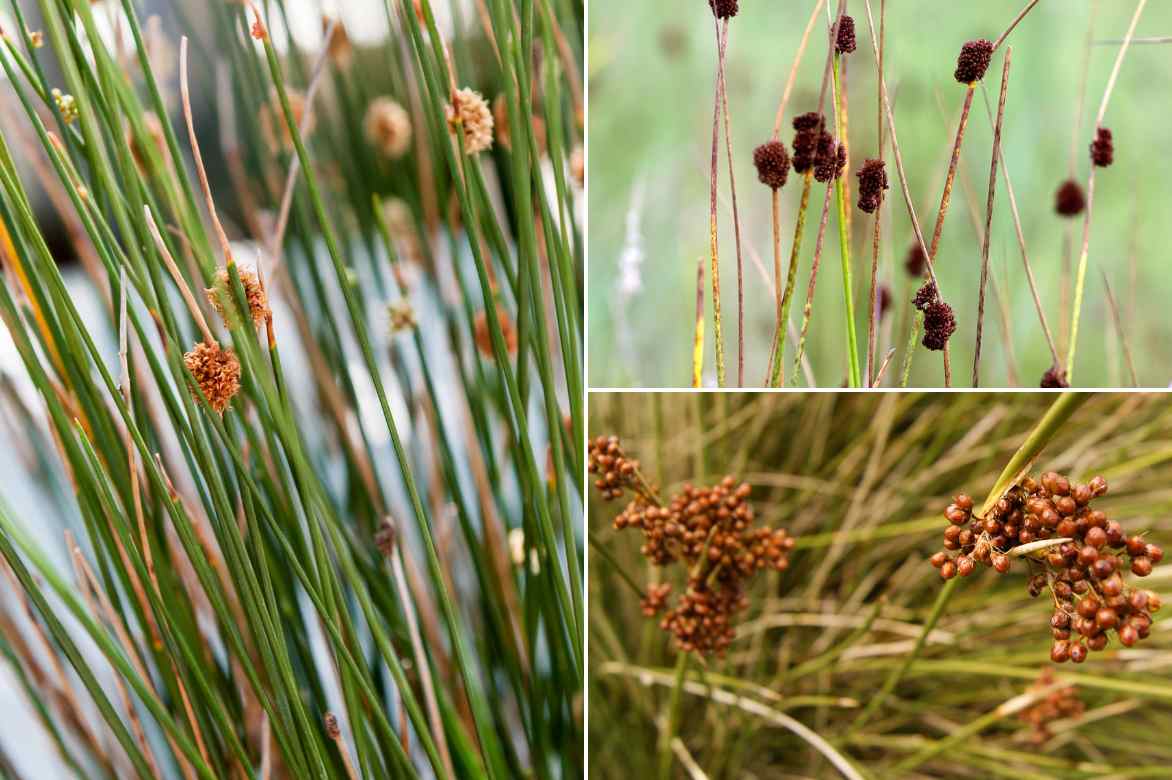
Juncus patens, and on the right, top: Juncus subuliflorus and bottom: Juncus acutus
Read also
12 perennials for heavy, wet soilOur favourite varieties

Juncus effusus
- Flowering time August, September
- Height at maturity 60 cm
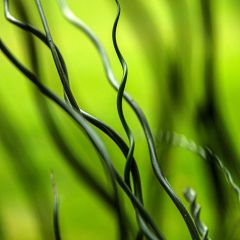
Juncus effusus 'Spiralis'
- Flowering time August to October
- Height at maturity 50 cm
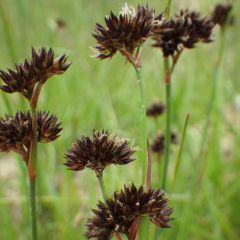
Juncus ensifolius
- Flowering time August to October
- Height at maturity 40 cm
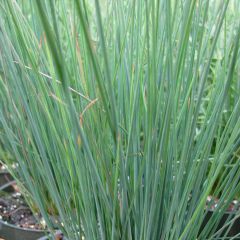
Juncus inflexus Blue Dart
- Flowering time August to October
- Height at maturity 45 cm
Discover other Peripheral perennial aquatic plants
View all →Available in 0 sizes
Available in 0 sizes
Available in 1 sizes
Available in 1 sizes
Available in 1 sizes
Available in 1 sizes
Available in 2 sizes
Available in 1 sizes
Available in 3 sizes
Available in 1 sizes
How to plant rushes?
Where to Plant?
Rushes thrive in moist soil, making them perfect for areas near water, such as pond banks, marshy zones, or waterlogged garden soil. A clay or loamy soil, which retains water well, is ideal for them, as it stays moist longer and promotes their rooting. However, they are not suited to dry or sandy soils, which drain too quickly and risk drying them out. If your soil is drier or sandy, you can enrich it with compost and add a layer of organic mulch to help retain moisture. They also prefer slightly acidic to neutral soil.
Choose a location where they will have access to direct or partial light, as although they tolerate shade, they will grow better with some sunlight.
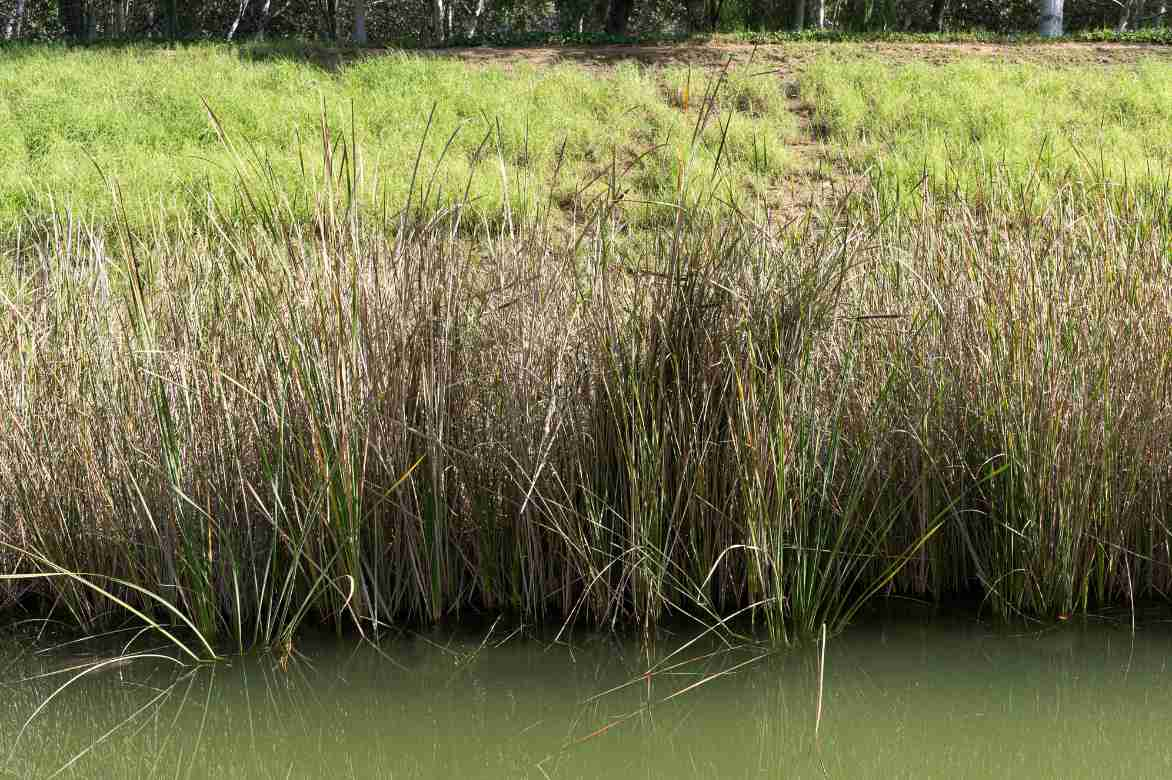
On riverbanks, rushes help stabilise the soil
When to Plant?
Ideally, plant rushes in spring or autumn, when the soil is still cool and moist, which encourages their rooting.
How to Plant?
-
- Loosen the soil well in the chosen spot by turning it over and breaking up clumps to encourage good root development.
- Check that the soil is moist before planting. If necessary, water the area to ensure consistent moisture, which is favourable for rushes.
- In the ground:
- Dig a hole the same depth and width as the plant’s container to give it space without compressing its roots.
- Carefully remove the rush from its container.
- Place the rush in the prepared hole, adjust it to ensure it is straight, then fill the hole with soil, lightly firming it. Avoid compacting the soil too much to maintain good aeration for the roots.
- Water thoroughly after planting to settle the rush and maintain soil moisture levels.
- In a pond:
- Choose a large pot or planting basket, ideally perforated, to allow good water exchange.
- Fill the pot with clay soil or a mix suitable for aquatic plants, and plant the rush in it.
- Weigh the pot down slightly with pebbles or stones to prevent it from floating in the water.
- Position the pot so that it is partially submerged in the pond, ensuring the top of the root ball remains above water to prevent the rush from being submerged.
- In the ground:
Maintenance of Juncus
Watering
Rushes require consistently moist soil to thrive, especially when planted in the ground. If the plant is in the ground but away from a water source, ensure you water it regularly to keep the soil moist, particularly during hot or dry periods. For rushes grown in a pond or partially submerged pot, check the water level frequently to ensure they never lack moisture.
Pruning
Rushes require little pruning, but it can be helpful to remove dry, yellowed, or damaged stems in early spring to encourage vigorous growth and maintain a tidy appearance. Use a pair of scissors or clean pruning shears to cut these stems at the base. This light pruning also helps aerate the clump and prevent debris buildup.
Some varieties of rushes can be invasive in damp areas, such as Juncus effusus or Juncus inflexus. To limit their spread, remove any new shoots that stray from the main clump. If you grow them in a submerged pot, this restricts their natural growth and prevents them from colonising the surrounding space.
Diseases and Pests
Rushes are generally very resistant to diseases and pests, but certain environmental conditions can still make them vulnerable.
Rushes can be susceptible to rust, a fungal disease that causes orange to brown spots on the stems and leaves. Although rare, rust can spread quickly in conditions of high humidity and heat. Remove affected parts and ensure good air circulation around the plants to reduce humidity.
Snails and slugs may occasionally nibble on the tender stems of young rushes, especially in spring.
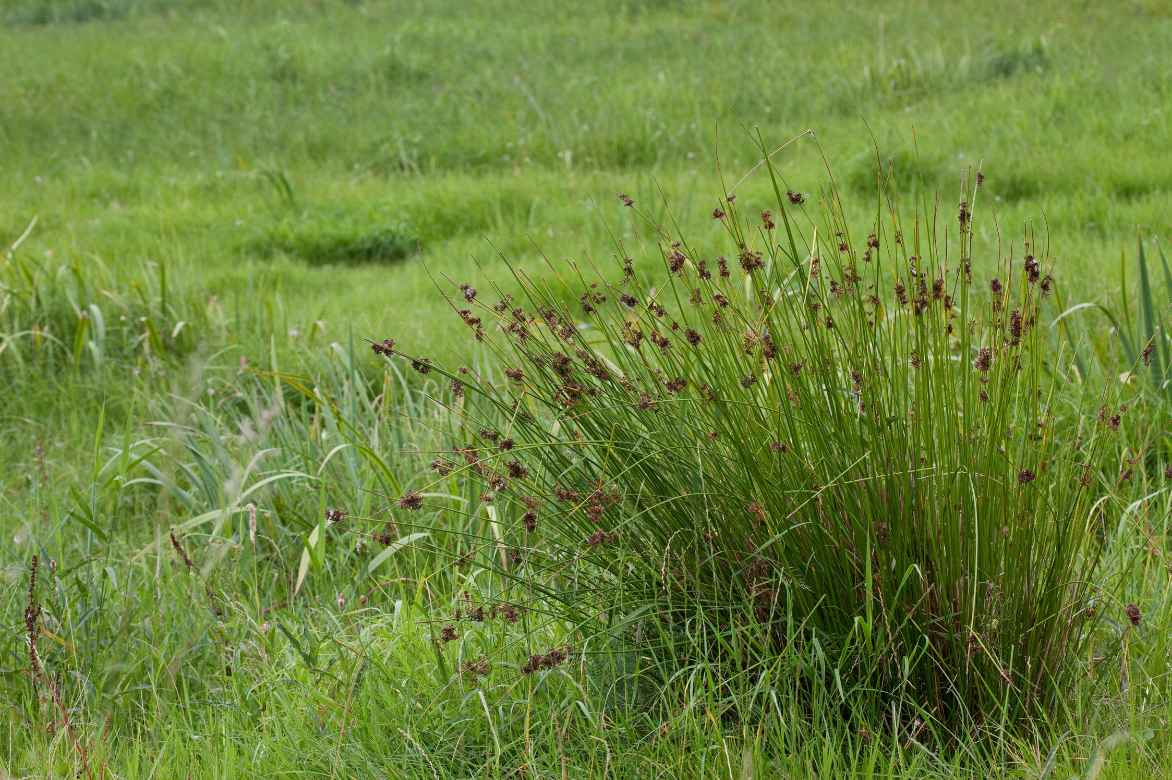
Multiply the rush
In nature, rushes spread by sowing and through the development of the rootstock. In the garden, we propagate our rushes by dividing clumps. Division of clumps is best done in spring or autumn, when the plant is in active growth but temperatures are not too extreme. This allows the rush to recover more easily after division.
- Preparing the plant: water the base of the plant thoroughly to ease extraction. Then, carefully dig up the rush clump with a spade or fork, taking care not to damage the roots.
- Division: with your hands or a sharp tool, divide the clump into several sections, each containing a good portion of roots and a few stems. Ensure each division has enough roots to establish quickly after transplanting.
- Replant immediately the divisions in moist soil, in the desired location (in the ground or in a pot). Dig holes of the same depth as the divisions, then place the clumps and cover with soil without compacting too much. If planting in a pond, place each division in a suitable planting basket, weighted if necessary to prevent it from floating.
- Watering and follow-up: water well after planting to help the roots establish, and maintain consistent moisture to encourage recovery. For the first few weeks, check that the soil remains moist and that the new clumps show signs of growth.
Association
To create a lush and vibrant wetland area, we will design a natural and lively scene, playing with the heights, colours, and shapes of plants suited to waterlogged soils.
Let’s start by structuring the base of this wetland with Juncus effusus ‘Spiralis’. Its upright, corkscrew-like stems add a graphic and refined touch, perfect for creating a backdrop. Plant them in clumps in the wettest parts of the soil, where they will help stabilise the banks and filter the water. Their bright green colour contrasts elegantly with more colourful blooms.
To introduce verticality and floral intensity, add the Lobelia cardinalis, or Cardinal Flower. Its vivid red flowers immediately catch the eye. Plant them near the rushes, where the moisture is constant but the roots can breathe.
Next, bring an aquatic and poetic atmosphere with various iris species. The classic Iris pseudacorus, with its large, bright yellow flowers, and Iris versicolor ‘Variegata’, with its shades of blue and violet (and variegated foliage!), add a wild and refined charm. These irises thrive in waterlogged soils and pair beautifully with rushes and lobelias.
The Asclepias incarnata, or Swamp Milkweed, enriches this palette with its soft pink umbels. Plant them in small clumps to add gentle touches among the more rigid foliage.
Finally, to dress the borders and add denser texture to the ground, include wetland sedges like Carex riparia. Their herbaceous clumps and glossy evergreen foliage create a smooth transition between flowering plants and the soil. Their rapid spreading makes them excellent ground covers that unify the whole.
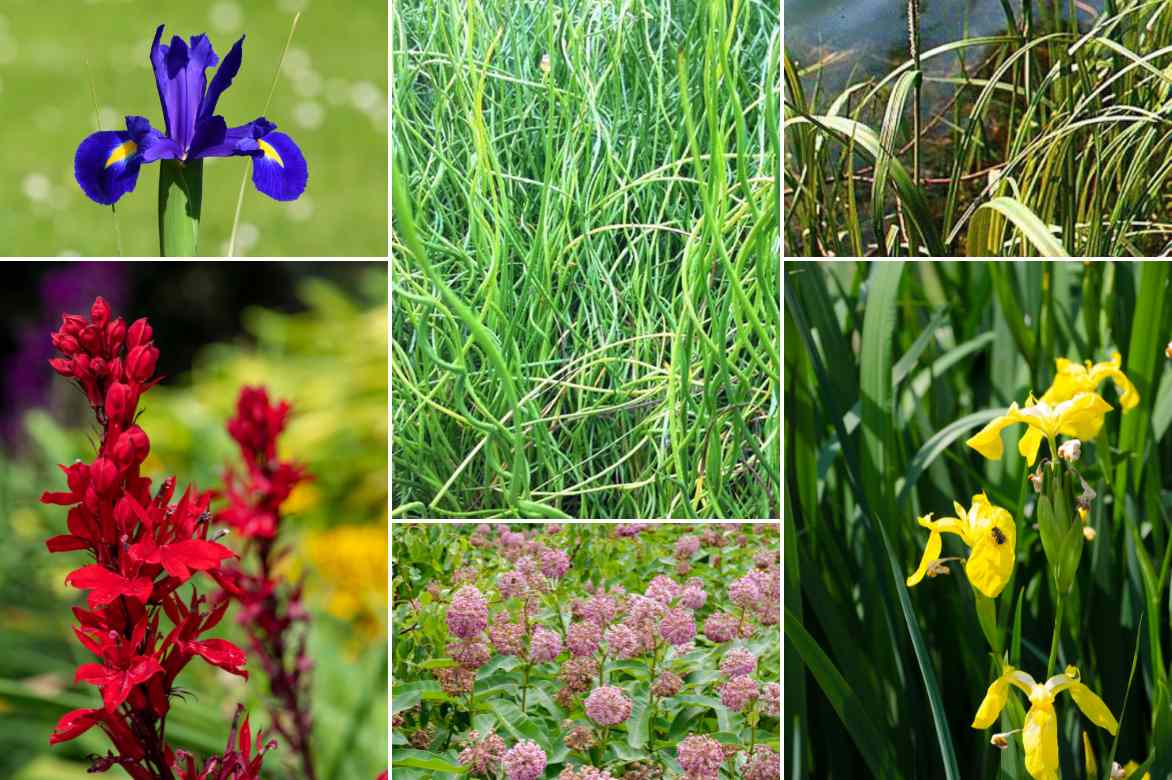
Iris versicolor, Juncus effusus ‘Spiralis’, Carex riparia, Lobelia, Asclepias incarnata, and Iris pseudacorus
Also worth reading
Riverbanks can sometimes be challenging to plant, discover our selection of perennials for damp riverbanks and bushes for damp soil.
→ Marion introduces a selection of grasses (in the broadest sense of the term) to plant on damp riverbanks.
- Subscribe!
- Contents
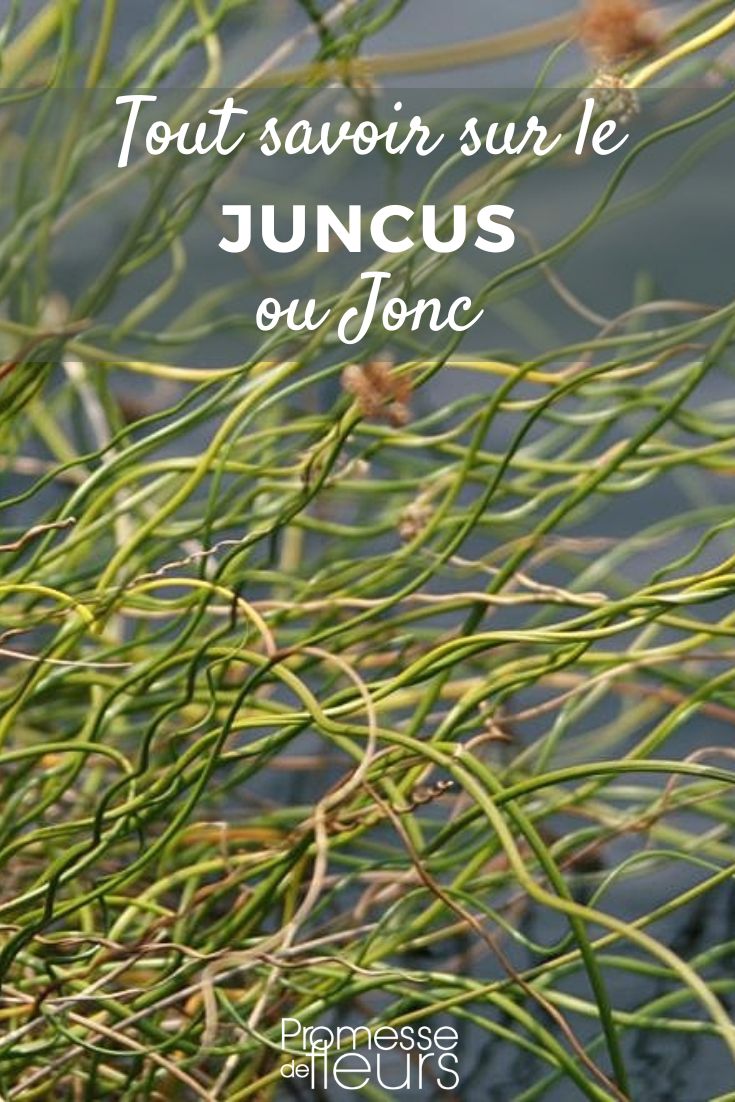































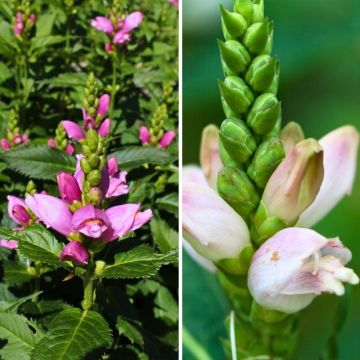
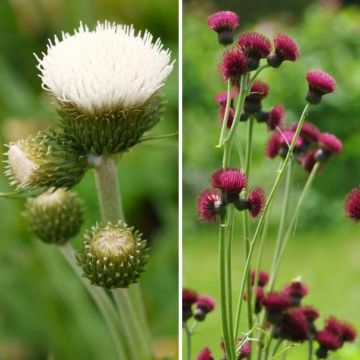
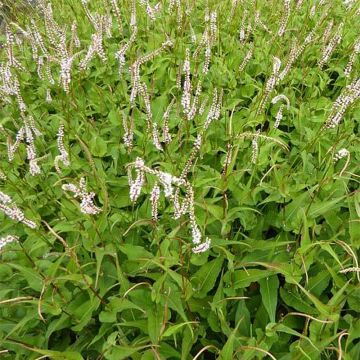


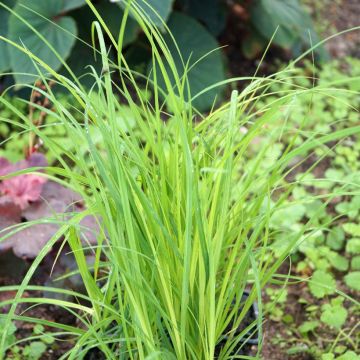

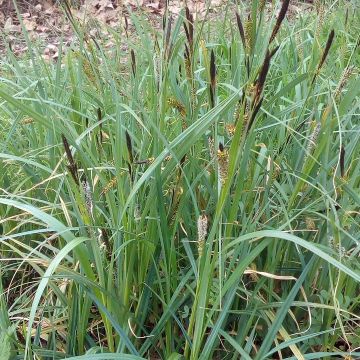
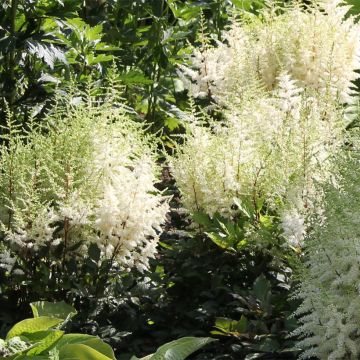
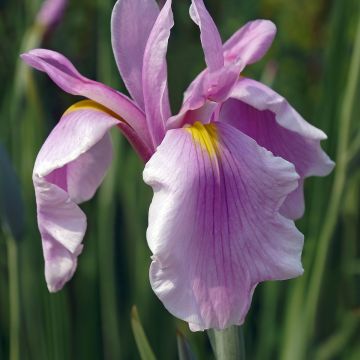
Comments